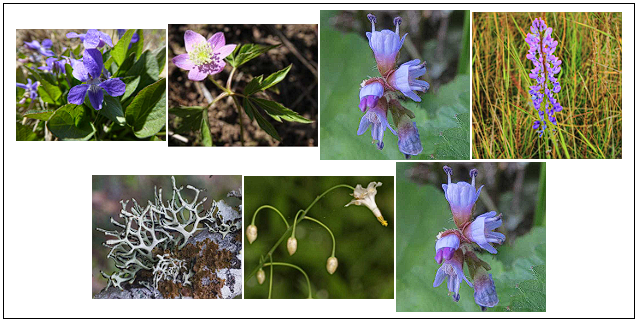Al decodificar las flores del Día de la Madre, habrá aprendido algunas de las muchas flores silvestres que se pueden encontrar en flor en esta época del año.
De hecho, la guirnalda de flores que encontraste en el lugar del campamento que miraste a través del velo del tiempo tiene muchas de esas incluidas.
¿Las flores intentan decirte algo? ¿El comerciante te estaba enviando un mensaje desde el encuentro fallido?
TU MISIÓN

Utiliza el códice de flores del rompecabezas anterior para descifrar el mensaje que dejó el comerciante. Con suerte, te dará una pista sobre lo que sucedió...
Al otro lado de
2

4

5

6

Abajo
1

3

Los recursos históricos que inspiraron nuestra aventura del Día de la Madre

iNaturalist (desde su sitio web)
¡Conéctate con la Naturaleza!
iNaturalist, una de las aplicaciones de naturaleza más populares del mundo, te ayuda a identificar las plantas y los animales que te rodean. ¡Conéctate con una comunidad de más de un millón de científicos y naturalistas que pueden ayudarte a aprender más sobre la naturaleza! Además, al registrar y compartir tus observaciones, crearás datos de calidad para la investigación que los científicos que trabajan para comprender y proteger mejor la naturaleza. iNaturalist es una iniciativa conjunta de la Academia de Ciencias de California y el Sociedad Geográfica Nacional.
Descarga la aplicación y comienza a hacer un seguimiento de las flores que ves en tus áreas naturales a tu alrededor: te sorprenderás de dónde pueden aparecer las flores silvestres de Oregón en tu vecindario: ¡están por todos lados!

Jerga Chinook
Jerga Chinook (Chinuk Wawa o Chinook WawaEl chinook, también conocido simplemente como jerga, es una lengua que se originó como lengua comercial pidgin en el noroeste del Pacífico. Se extendió durante el siglo XIX desde la parte baja del río Columbia, primero a otras áreas de los actuales Oregón y Washington, luego a Columbia Británica y partes de Alaska, el norte de California, Idaho y Montana, aunque a veces adoptó características de una lengua criolla.[2] En parte desciende del idioma chinook, en el que se basa gran parte de su vocabulario.[3] Aproximadamente el 15 por ciento de su léxico es francés, y también hace uso de préstamos ingleses y de otros sistemas lingüísticos. Toda su forma escrita está en la taquigrafía duployana desarrollada por el sacerdote francés Émile Duployé.
Muchas palabras de la jerga chinook siguen siendo de uso común en el oeste de los Estados Unidos y en la Columbia Británica, y se ha descrito como parte de una herencia multicultural compartida por los habitantes modernos del noroeste del Pacífico. El número total de palabras de la jerga en los léxicos publicados asciende a solo cientos. [4] Tiene su propio sistema gramatical. Es un sistema muy simple y, al igual que su lista de palabras, es fácil de aprender. Aunque existe en la jerga chinook, la consonante /r/ es rara, y las palabras prestadas del inglés y el francés, como rice y merci, han cambiado en su adopción en la jerga, a lays y mahsi, respectivamente.
Estamos agradecidos a...

